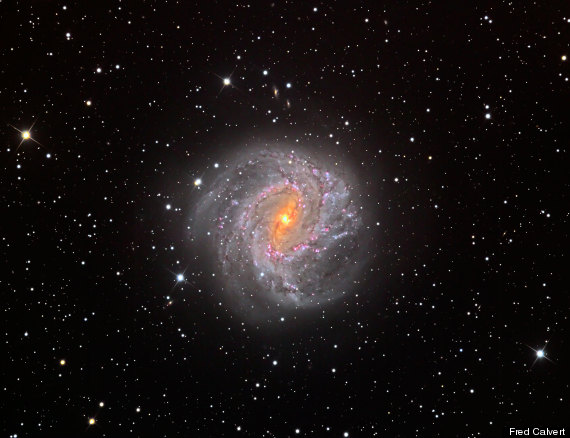August and I have a special astronomical attachment. The weather is generally fair, the skies are generally clear, and the seeing conditions are generally good. Sunsets come noticeably earlier and my body, which has been stimulated by the excess summer light, is alert as darkness falls. It's a great month to quietly contemplate our place in the universe.
As a kid, June was always a whirlwind. I rushed into summer vacation and left school in the dust. The word, "Finally!" embodied June. It was too exciting, too deserved but seldom appreciated.
July settled in to a parade of travel, cookouts, fireworks, and socializing. It was the month for making new friends and experimenting.
August was an in-between time during an in-between season. Vacations were past tense and school loomed in the future. As a kid, August was limbo. Soon I would start a new grade, with new teachers and new students. Maybe I'd be attending a new school and I would soon feel like the youngest kid surrounded by giants. August was for reflection, appreciation, planning, and dreaming.
One of my fondest childhood memories was sitting in the backyard watching the stars with my best friend Dan one August evening. I must've been about 11 or 12. The Sun had set and stars were slowly emerging from the royal blue-velveting sky. In the darkest part of the yard, away from the lights, we sat in the grass, still warm from the remnants of the Sun's rays. If we talked, I don't remember it. What I remember is the perfection of moment. Along with the perfect temperature sat perfect relaxation. We did not have a care in the world. We watched the stars move slowly across the sky. The Moon shifted ever-westward until it finally grazed the neighbor's house and was consumed. We were witnessing the movement of the Earth -- something we had learned about but never understood in school. Star gazing became a moment to slow down, to breathe, think, and prepare.
The August after I graduated from college I took a trip with friends to Mackinac Island, in Michigan. On the first night, our friend Carrie, who lived on the island during the summers, led us to an overlook to stargaze. Away from the city lights, it was unsettlingly dark. Unbeknownst to any of us it was the peak of the Leonid Meteor Shower, which occurs every year around August 12. After the first dozen meteors streaked across the sky we realized something special was happening. "Wow!" "Ooh." "Aah," we remarked at every meteor streak. For me it was another limbo moment in time -- after college what was I going to do? Where would my friends end up after we got back home? Where would I find myself?
A few Augusts later, I was an astronomer on vacation at Crater Lake National Park in Oregon. I had been camping alone on the rainy Oregon coast for a few days and headed inland to dry out. On the first night at Crater Lake, the clouds parted at sunset and orange light ignited the pine trees across the valley from the campground. I made quick friends with my neighbors and, when they heard I was an astronomer, wanted me to show them the stars. We stayed up for hours gawking at the perfectly clear sky. There were so many stars that they seemed alive. Cygnus the Swan actually looked like a swan with a long neck, beak and outstretched, starry wings. The tiny constellation Delphinus the Dolphin leapt out of the cosmic ocean, back arched, with the Milky Way sparkling above. Mars demanded attention, blazing with its crimson torch. We stayed up late enough to see Cassiopeia the Queen, in all her glory, rise higher in the northeast sky and faint, but definitely discernable was the great Andromeda Galaxy -- 200 billion stars so far away that they were visible to the naked eye only as a smudge, a mirage that floated in and out of our consciousness. Imagine 200 billion stars, 200 billion suns, and we were seeing them. We were playing a part in studying them all.

Photo Credit: Fred Calvert
This month we still have the Swan, the Dolphin, the Queen, and the Andromeda Galaxy. We will always have these sights every August evening for the next several thousand years. In addition, this year we have the brilliant planet Venus gracing the skies right after sunset, keeping us entertained until the rest of the stars pop out. We also have Saturn, which looks like an ordinary yellow star, heading down in the southwest night after night. In a telescope you can behold Saturn's surprise -- a beautiful, surreal series of rings.
August is the month to take all of this in. Whether you're a kid or an adult, this is the time to lie back in the grass, get out of town to experience a meteor shower, view the stars of summer, and share the universe with those you love.
Dean Regas is the Outreach Astronomer for the Cincinnati Observatory and the co-host of PBS' bite-size astronomy program, Star Gazers. He can be reached at: dean@cincinnatiobservatory.org
